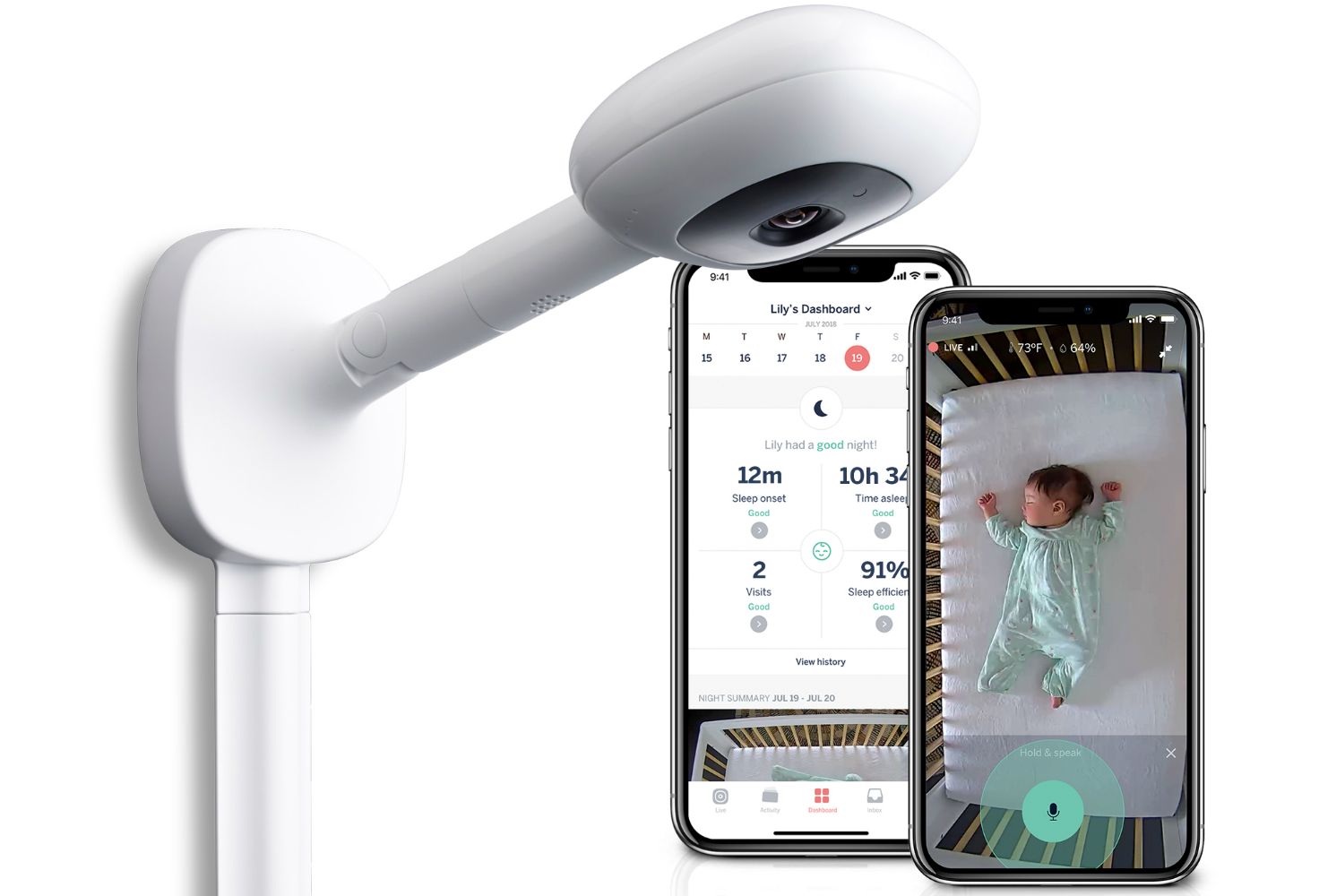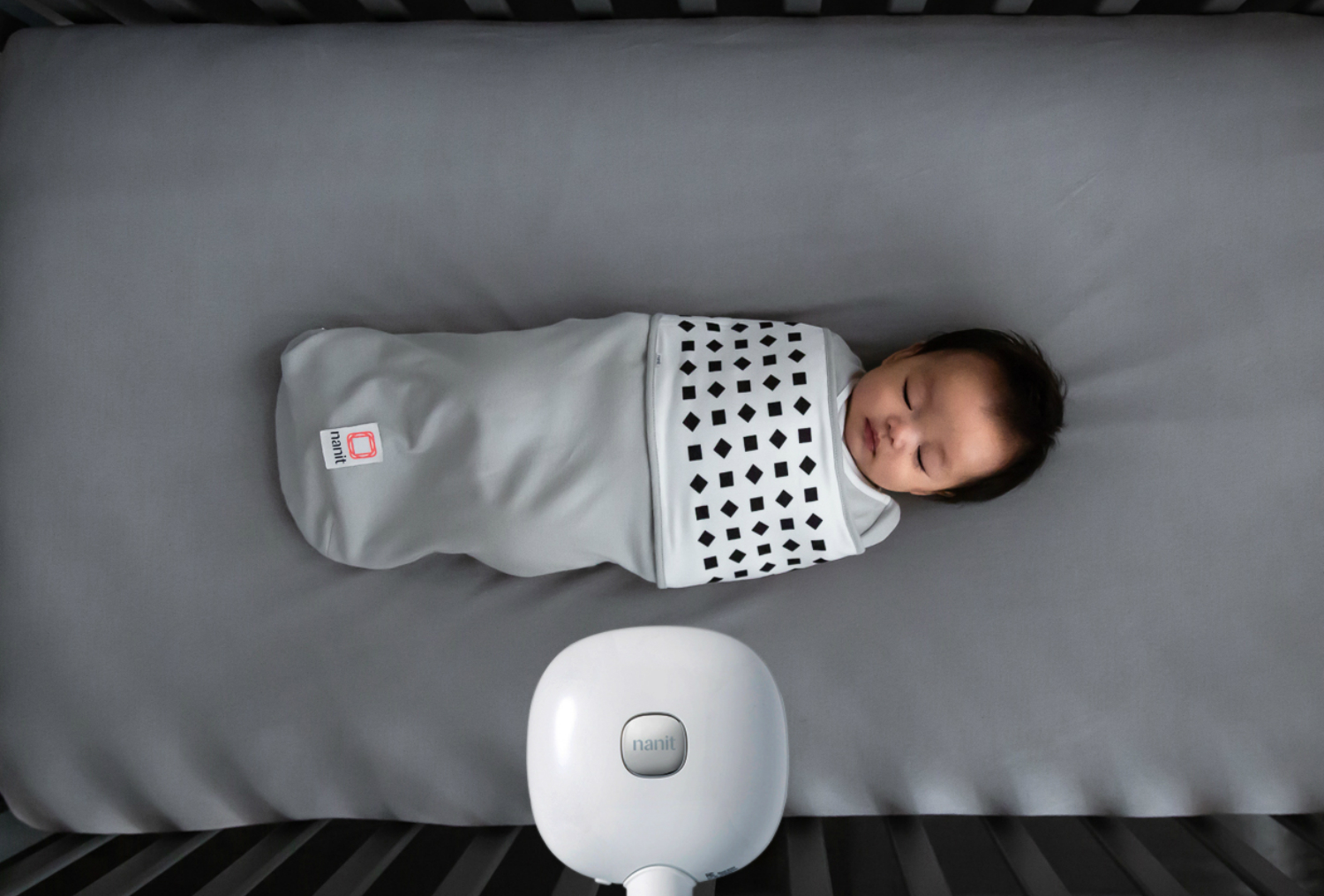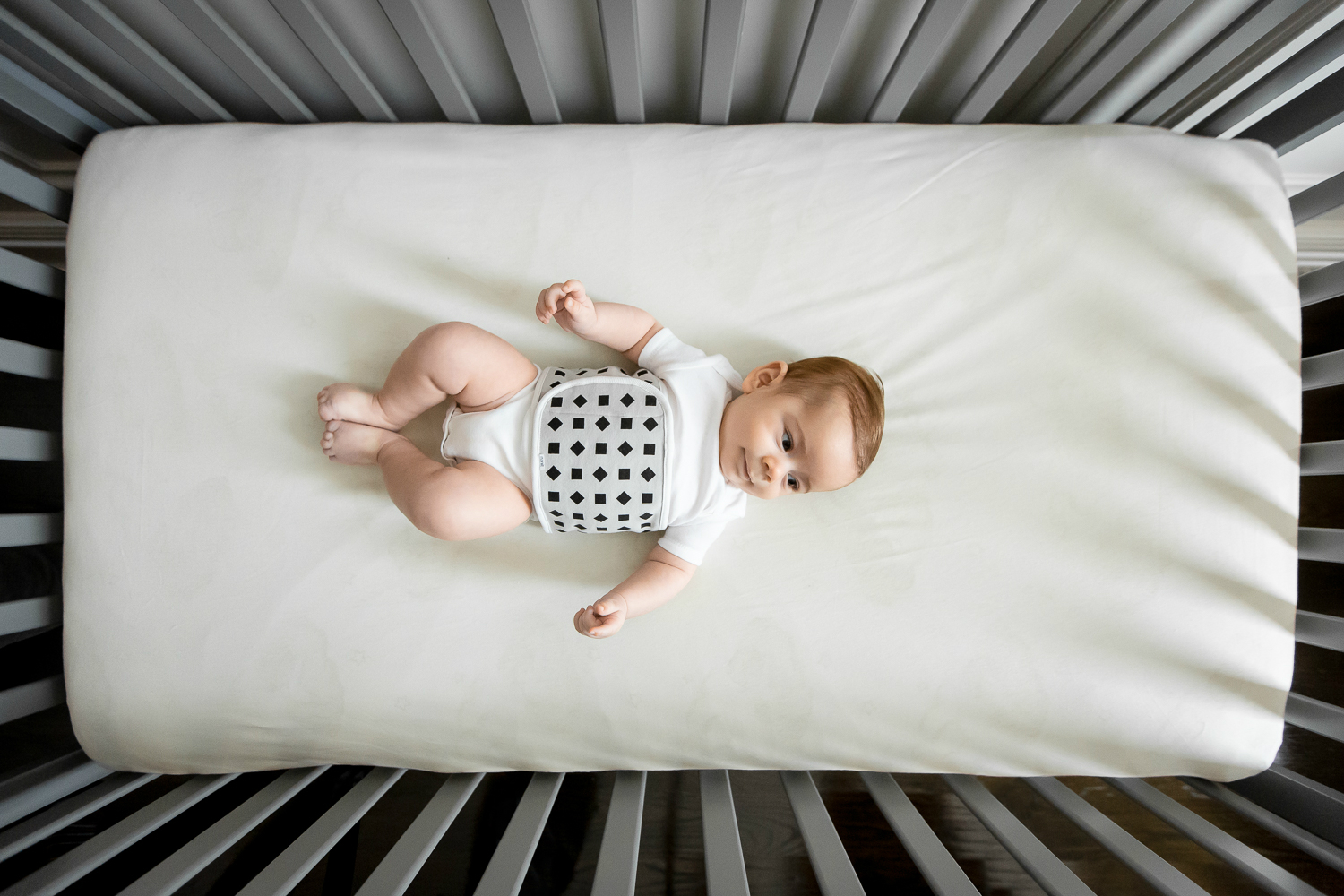Nanit introduced Breathing Wear, two styles of baby wearables with work with Nanit’s overhead crib monitor, at CES 2019.
The Nanit Plus smart HD baby camera tracks a baby’s breathing and sleep movement and patterns. The camera’s sensors analyze motion on a pixel level from a bird’s-eye view.
More CES 2019 coverage
- Our CES 2019 Hub: The latest news, hands-on reviews, and more
- Procter and Gamble offshoot Opté is launching a beauty wand to banish blemishes
- Cordless hair dryers aren’t really a thing but Volo wants to change that
- Felix Gray’s latest glasses cut down on blue light to help you sleep
- Here’s the oddest and weirdest wearable tech we saw at CES 2019
The camera works with babies wearing conventional clothing and wraps, but Breathing Wear takes Nanit’s motion analysis to the next level.
Breathing Wear is available in two styles, Breathing Band and Nanit Swaddle. Both styles have shapes printed on the fabric in sizes, colors, and inks the company says were “scientifically engineered to be read by the Nanit camera from any angle.”
“Nanit is the only monitoring solution that puts your Baby’s sleep development in your hands,” said Nanit co-founder and CEO Dr. Assaf Glazer. “We are excited to introduce Breathing Wear at CES, as it helps provide parents with a complete picture of their baby’s night and gives them the confidence and assurance they need when they put their baby into the crib.”
Most wearables for adults and children require skin contact or a direct view of the skin for biometric measurement. Because the Nanit camera tracks breathing-related movement, it doesn’t need skin contact. The Breathing Wear printed shapes enable higher degrees of accuracy.

To use Breathing Wear, you wrap the baby in either the Breathing Band or Nanit Swaddle. Then in the Nanit mobile app, tap on the baby to start the camera and Nanit’s algorithms tracking the baby’s breathing and sleep. If the baby stops breathing, Nanit sends real-time alerts immediately.
Available in sizes from birth to 24 months and made of 100 percent cotton, the Nanit Swaddle and Breathing Band come in pebble gray, marshmallow white, or mint green colors.
Both Breathing Wear styles will be available in March, first on Nanit’s website before a rollout to retail stores nationwide. The garments will be sold in singles and 3-packs, with prices starting at $25. If you already own a Nanit camera, you’ll be good to go with Breathing Wear.
If you don’t already have a Nanit camera, the Nanit Complete Monitoring System will include a Nanit Plus camera, one Nanit Swaddle and one Breathing Band (size small), a camera mounting system, a camera travel stand, and a one-year subscription to Nanit’s Insights service for deeper sleep and breathing analysis.
Editors' Recommendations
- No need to estimate: Nanit’s smart sheet precisely measures your baby’s height
- The KamiBaby baby monitor magnifies your little one’s breathing






